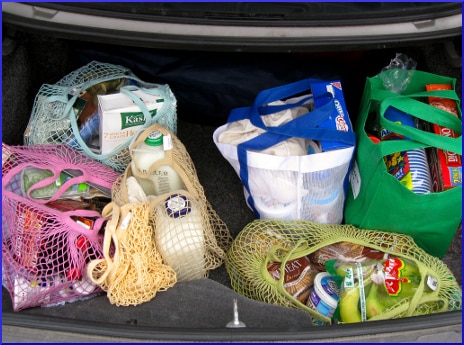
In discussing the food industry’s promise of self-policing in the realm of child-targeted advertising, we saw how Nestle wiggled out of taking responsibility for cheating when they introduced three varieties of Girl Scout cookie-based candy bars. The company had signed on with the Children’s Food and Beverage Advertising Initiative (CFBAI), the industry’s version of a code of conduct. One of the things it wasn’t supposed to do was advertise to children under 12.
Nestle brought the Girl Scout candy bars onto the market in 2012, to immediate criticism from the Center for Science in the Public interest (CSPI) and the Berkeley Media Studies Group. The CSPI wrote the company an open letter pointing out:
Even if the candy bar advertising is targeted towards adults, the Girl Scout’s theme is inherently appealing to children and so constitutes marketing to children… Marketing thematically geared towards children is marketing to children.
The manufacturer replied with justifications that had been provided by CFBAI director Elaine Kolish. Nestle maintained that it had only agreed to refrain from advertising to kids under 12 on “measured media” which means television and radio, and in “emerging media” which means video games, applications, and other interactive electronic platforms. They never made any promises about what would appear on the packaging of any product, so using Girl Scouts promotional material was all right.
Convoluted thinking
The company also argued that children could not be influenced by a candy bar wrapper because in a food retail store, at the point of purchase, only adults would see the items. That’s right, the food marketers claimed that children do not frequent grocery stores. Presumably, only grownups shop, and after buying the product, they are responsible for keeping impressionable children away from the provocative sight of a Girl Scout logo on a candy bar.
The CSPI counterargument stated that it all came to the same result, because the treats were being marketed to children either way, whether they were deemed the primary audience of the marketing effort, or accidentally became the inadvertent recipients of it.
This is exactly the kind of talk that manufacturers do not want to hear. If the maker can be prosecuted for what happened to a third party the product was not intended for, even if the product is a marketing gimmick, this would not be a good precedent. Once you bring an “inadvertent recipient” into the legal equation, the field is wide open and lawsuits fly every which way. If the burden is on them to protect any person or group that might be an inadvertent recipient of advertising, that could be anybody, and it could mean the downfall of advertising.
Playing with language
The term “limited edition” has a very specific meaning in book publishing and the art world. When a bronze figurine is released as a limited edition, it means that an exact number of the item was produced, and then the mold was destroyed. The buyer is getting #5/12, the fifth iteration of a statue of which only 12 copies exist in the entire world. This rarity makes it special, and justifies the price.
When the three Girl Scout candy bars hit the market, they were labeled “Limited Edition.” It might have been a “Run it up the flagpole, and see if anybody salutes” type of corporate ploy. They would give it a try, wait for the inevitable flood of objections, and reassess the situation.
If the pushback seemed seriously threatening, they could say, “Hey, relax, we didn’t know you felt that strongly about it… It was just a one-time campaign and we won’t do it any more. See, it says right there — Limited Edition!”
At any rate, the public hoovered up the candy bars. A reviewer called Stephanie compared them to “an ultra-light, super-portable box of cookies!” and also wrote:
Now I can have the taste of authentic Girl Scout cookies in a bite-sized package TODAY. For a limited time.
The following year, Whitney Matheson wrote:
I know it sounds a little insane to offer a presale for candy bars, but last year these became incredibly hard to find. The bars will be sold in stores from June through September. Grab ’em while you can!
In 2014, the publicity machine swung into action again, announcing that the demand for Girl Scout candy bars was enormous, and the would be back starting in June “while supplies last.”
When the summer of 2015 approached, they returned once more. It seems that scarcity is a big part of the appeal, and mandatory for all food bloggers to mention. It also seems that Nestle invented a whole new meaning for the term “limited edition.”
Your responses and feedback are welcome!
Source: “Nestle’s Girl Scouts deal violates pledge,” Lexology.com, 07/06/12
Source: “Health Advocates Say Nestlé Co-Branded Candy With Girl Scouts …,” Adweek.com, 06/18/12
Source: “REVIEW: Nestle Crunch Limited Edition Thin Mints Girl Scouts Candy Bar,” TheImpulsiveBuy.com, 06/09/12
Source: “Food alert: Nestle’s Girl Scout candy bars are back!,” USAToday.com, 05/09/13
Photo credit: timsamoff via Visualhunt.com/CC BY-ND

 FAQs and Media Requests:
FAQs and Media Requests: 











